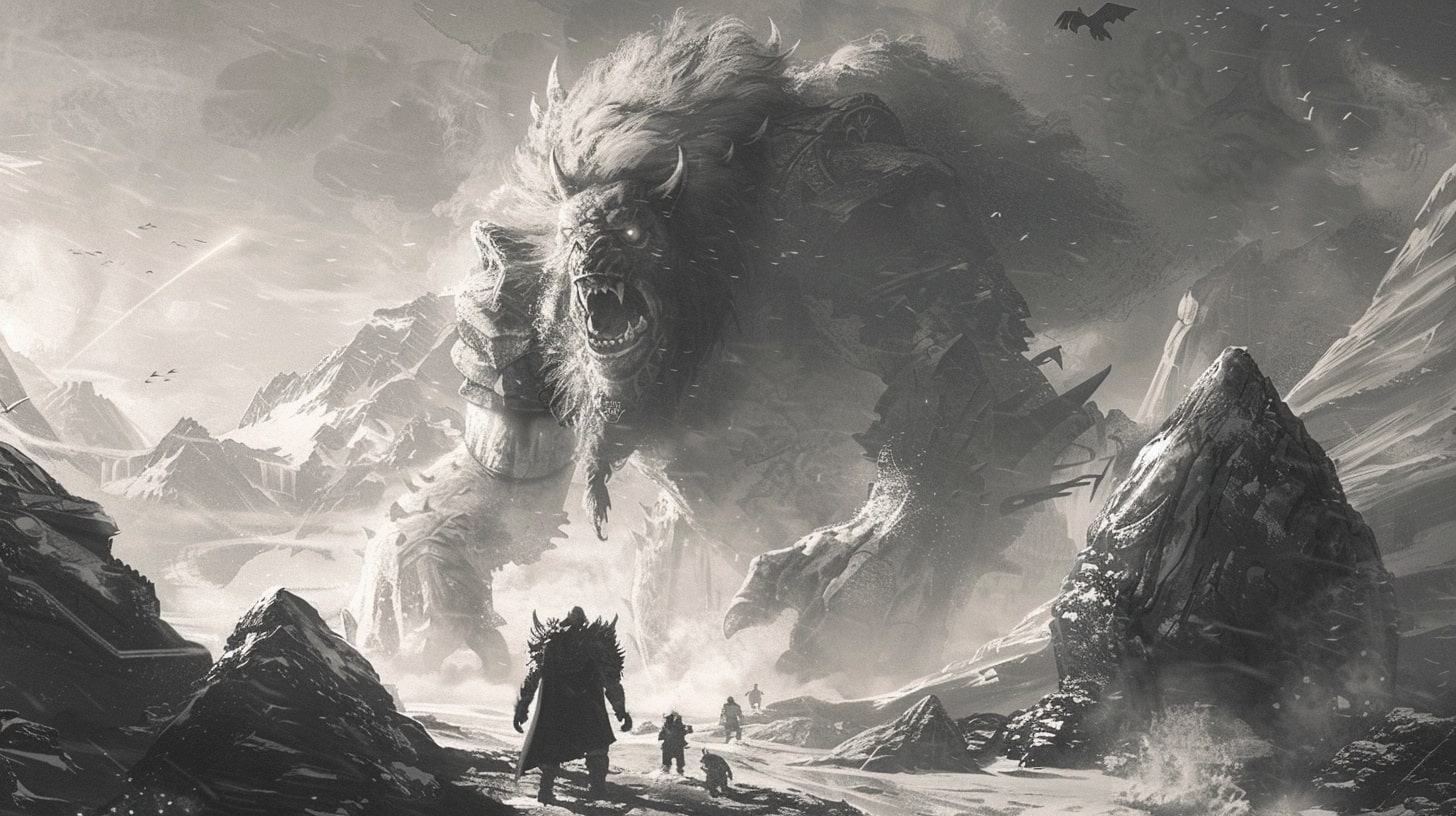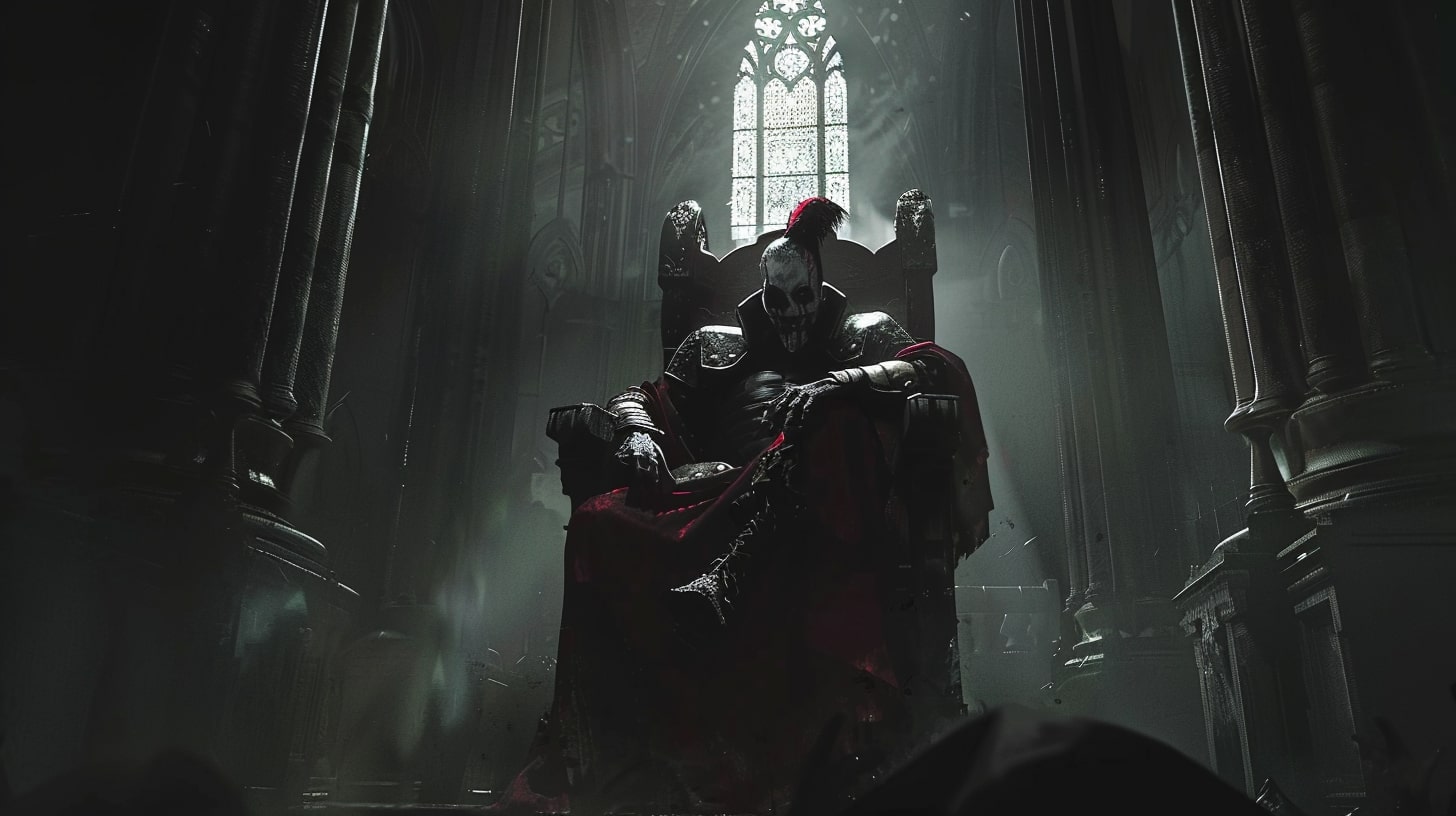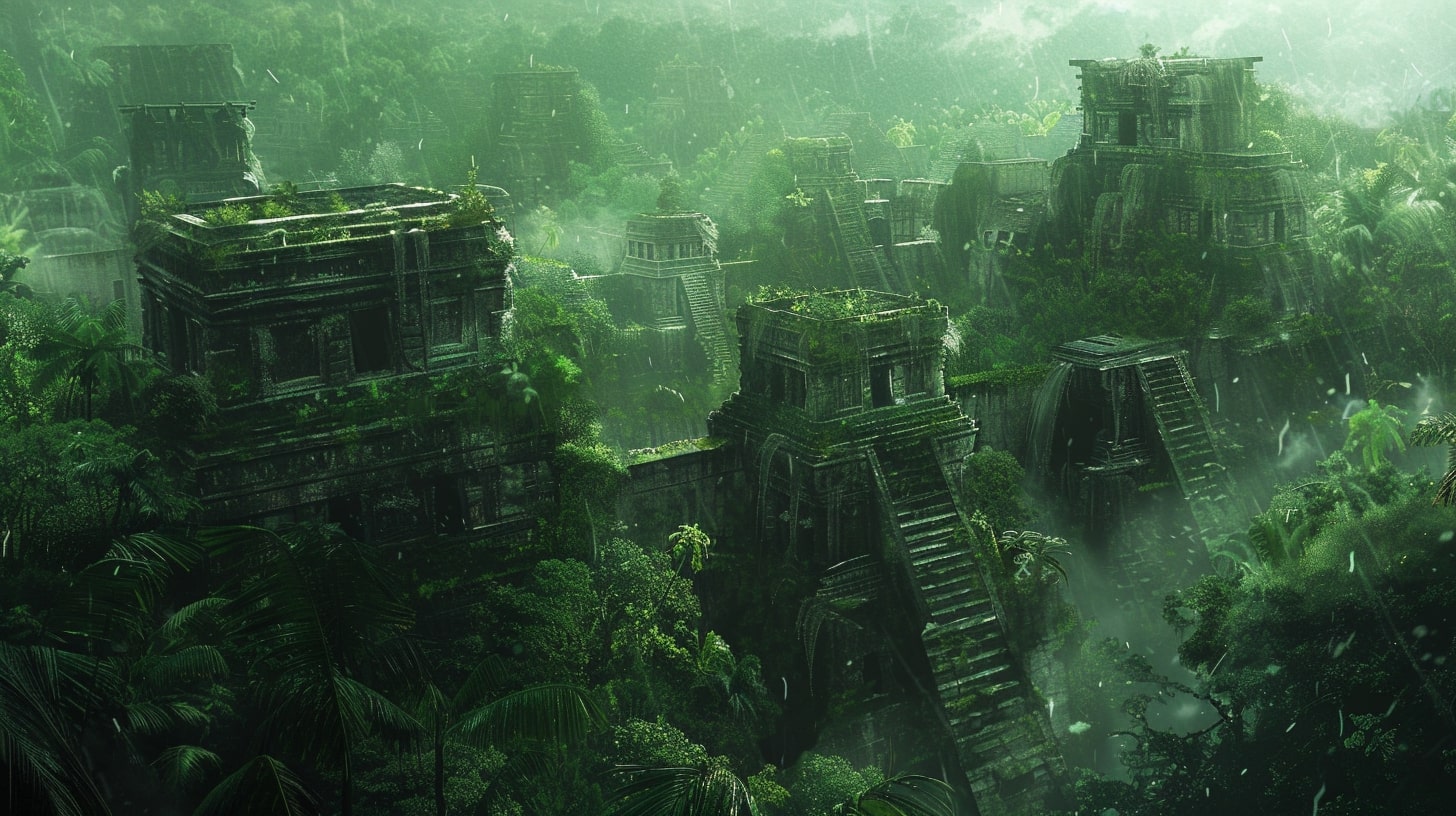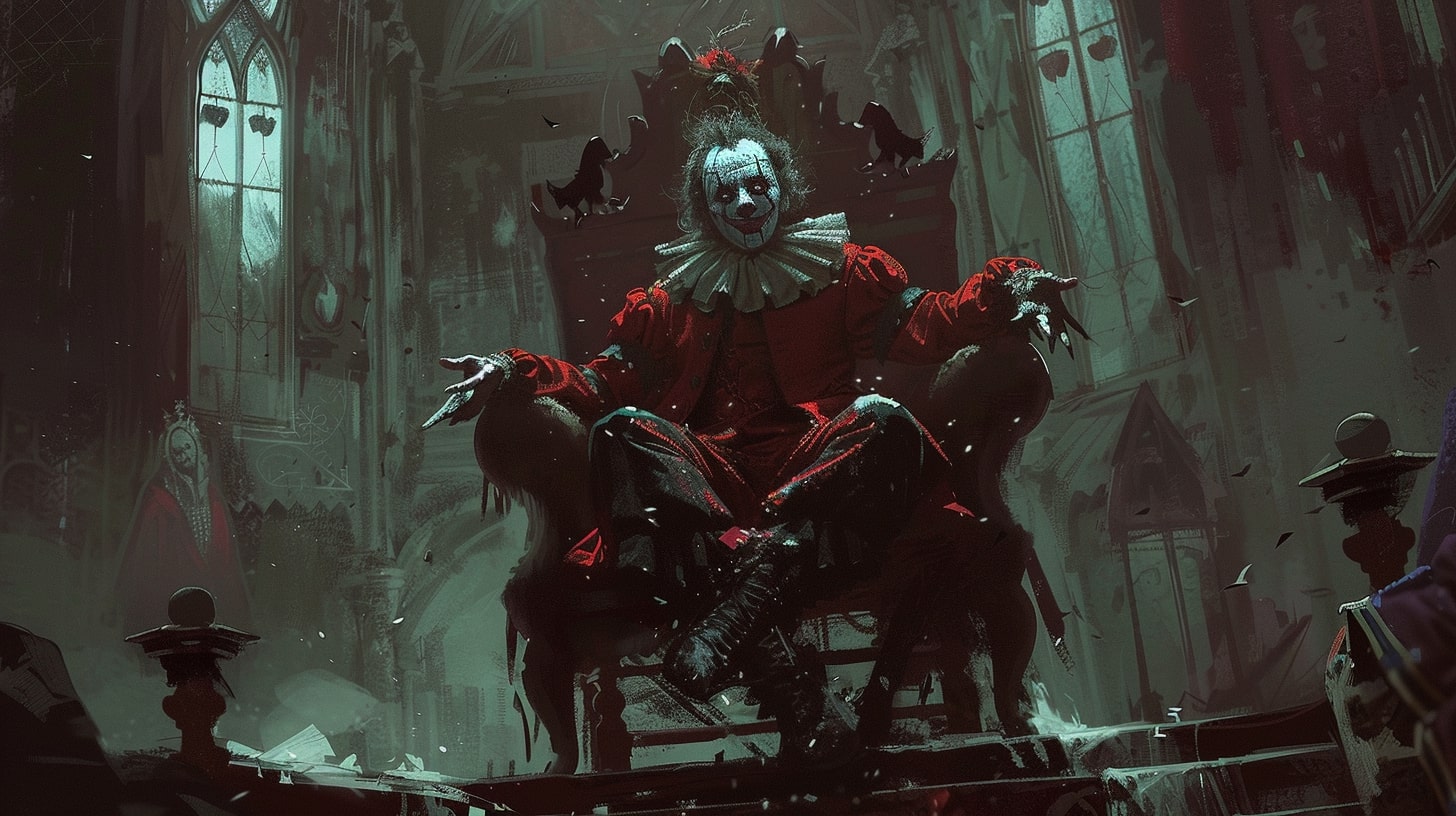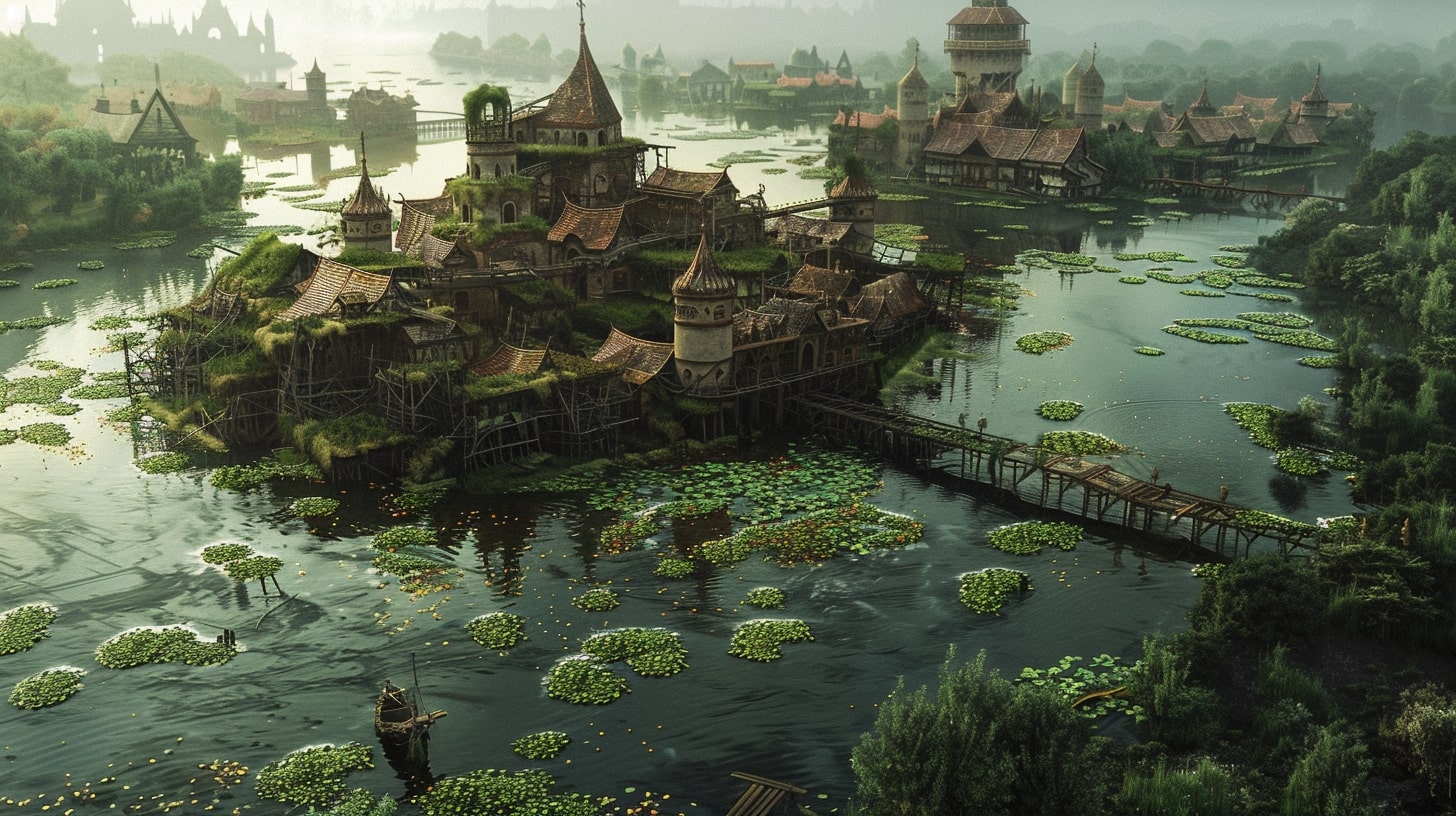The Art of Worldbuilding
In the fantastical realm of writing, worldbuilding is a crucial skill that allows you to create immersive and captivating fictional worlds. It is the process of constructing an entire universe within the pages of your book, complete with its own unique settings, cultures, and rules.
As a fantasy author, mastering the art of worldbuilding is essential to bringing your story to life so let's talk about worldbuilding for fantasy authors and fans.
What is Worldbuilding?
Worldbuilding is the act of constructing a detailed and cohesive fictional world that serves as the backdrop for your story. It involves creating every aspect of this world, from its geography and climate to its cultures, societies, and even magical systems. By crafting a fully realized world, you provide readers with a rich and believable setting that enhances their reading experience.
Within your world, you have the freedom to shape landscapes, invent languages, and design intricate social structures. From sprawling cities to fantastical creatures, your imagination is the limit. Worldbuilding is an opportunity to unleash your creativity and transport readers to a realm entirely of your own making.
Why is Worldbuilding Important in Fantasy Books?
Worldbuilding plays a pivotal role in fantasy books for several reasons. Firstly, it allows you to create a sense of immersion for readers. By crafting a vivid and realistic world, you draw readers into the story, making them feel as though they are a part of the fantastical realm you've created.
Secondly, worldbuilding adds depth and authenticity to your narrative. A well-developed world provides a rich tapestry of history, culture, and mythology that shapes the actions and motivations of your characters. It creates a sense of believability, making the events and conflicts within your story feel grounded and consequential.
Moreover, worldbuilding helps to establish the rules and logic of your fictional universe. Whether it's the limitations of magic or the intricacies of political systems, a well-constructed world provides a consistent framework that guides your story. It ensures that your readers understand the boundaries of your world and can follow the logic of its workings.
By investing time and effort into worldbuilding, you create a compelling and captivating backdrop that enhances your storytelling. It allows you to weave intricate plots, explore diverse cultures, and immerse readers in a world that feels as real as their own.
In the following sections, we will delve deeper into the various aspects of worldbuilding, including creating a strong setting, developing cultures and societies, crafting magical systems, and aligning characters within the world. So, grab your pen and let's embark on this magical journey of worldbuilding together.

Worldbuilding for Fantasy
To create a captivating and immersive fantasy world, you must start by establishing a strong foundation. This includes creating a strong setting, establishing rules and laws, and developing the geography and climate of your world.
Creating a Strong Setting
A strong setting forms the backbone of your world. It encompasses the physical environment, such as landscapes, landmarks, and architecture, as well as the cultural and historical elements that shape the world. When crafting your setting, consider the following:
- Geography: Develop a diverse range of geographical features, including mountains, forests, rivers, and deserts. This adds depth and realism to your world. For more information on worldbuilding geography, check out our article on worldbuilding geography.
- Cities and Towns: Design unique cities and towns that reflect the culture and history of your world. Consider their layout, architecture, and infrastructure. For inspiration, take a look at our article on worldbuilding cities.
- History: Create a rich history for your world, including significant events, wars, and the rise and fall of civilizations. This history will influence the current state of your world and provide depth to your storytelling. For tips on worldbuilding history, visit our article on worldbuilding history.
- Culture: Develop distinct cultures within your world, each with its own traditions, beliefs, and social structures. These cultural elements will shape the behavior and interactions of your characters. Explore our article on worldbuilding cultures for ideas and inspiration.
When creating Andrascu, I started with the geography so that it would allow me to set everything else up. If you create creatures and characters without understanding the landscape then things might fit as naturally as you want.
However, you could do it in reverse and let the creatures that you create dictate the type of geography that is in your world.
Establishing Rules and Laws
To create a believable world, it's essential to establish rules and laws that govern its functioning. These rules can pertain to everything from the behavior of magic to the operation of societal systems. Consider the following aspects:
- Magic System: If your world includes magic, define the rules and limitations of its use. Establish the source of magic, how it is accessed, and any consequences or costs associated with its utilization. Our article on worldbuilding magic system can provide you with further guidance.
- Political Systems: Determine the political structures within your world, such as kingdoms, empires, or democracies. Consider the distribution of power, the role of different governing bodies, and any conflicts that arise from these systems. For more insights, check out our article on worldbuilding politics.
- Laws and Regulations: Establish the laws and regulations that govern your world. Consider how these laws are enforced and any consequences for breaking them. This adds realism and depth to your world.
Developing the Geography and Climate
The geography and climate of your world significantly impact its inhabitants and the overall narrative. Consider the following factors:
- Landforms: Design a diverse range of landforms, including mountains, valleys, plains, and bodies of water. These features influence the movement of characters and the distribution of resources.
- Climate: Determine the climate zones within your world, such as tropical, temperate, or arid regions. Consider how climate affects the availability of food, clothing, and shelter for your characters. For more information on worldbuilding climate, visit our article on worldbuilding climate.
By focusing on creating a strong setting, establishing rules and laws, and developing the geography and climate, you lay a solid foundation for your fantasy world.
This foundation sets the stage for the other elements of worldbuilding, such as building cultures and societies, crafting a magical system, and creating compelling characters. Remember to strike a balance between providing detail and leaving room for the reader's imagination to make your world truly come alive.

Building Cultures and Societies
To create a rich and immersive fantasy world, it's essential to invest time and effort into building believable cultures and societies. This aspect of worldbuilding adds depth and authenticity to your story, allowing readers to fully immerse themselves in your created world. In this section, we will explore three key elements of building cultures and societies: creating believable cultures, developing political systems, and designing social structures.
Creating Believable Cultures
Believable cultures are the foundation of a well-developed fantasy world. When creating cultures, consider factors such as history, traditions, customs, language, and values. Each culture should have its own unique characteristics that shape the behavior and mindset of its inhabitants. Think about the geography and climate of your world and how they may influence cultural practices. For inspiration and guidance on worldbuilding cultures, check out our article on worldbuilding cultures.
To make your cultures more realistic, consider incorporating diverse elements such as different social classes, religious beliefs, and artistic expressions. Flesh out the day-to-day lives of your characters within each culture, including their clothing, food, and rituals. By delving into the intricacies of your cultures, you can create a vibrant and captivating world that readers will be eager to explore.
Developing Political Systems
Political systems play a crucial role in shaping the dynamics of your fantasy world. Consider the type of government, its structure, and the distribution of power. Are there monarchies, democracies, or perhaps a more complex system unique to your world? Explore the relationships between rulers and citizens, as well as the roles of different social groups within the political system.
To add depth to your political systems, consider the history and origins of each system. How did they come into existence? Are there any conflicts or power struggles? By weaving these details into your story, you can create a sense of realism and intrigue. For more guidance on worldbuilding politics, be sure to check out our article on worldbuilding politics.
Designing Social Structures
Social structures within your fantasy world help define the roles and interactions of its inhabitants. Consider elements such as social classes, family structures, and hierarchies. Are there distinct roles for different genders or age groups? How does the social structure affect the opportunities and limitations of individuals within the society?
To make your social structures more engaging, delve into the relationships and power dynamics between different groups. Explore the impact of social norms, traditions, and expectations on your characters. By incorporating these details, you can create complex and relatable societies within your fantasy world.
As you build cultures and societies within your world, remember to maintain consistency and coherence in their development. Ensure that they align with the overall theme and tone of your story. By focusing on the intricate details of these elements, you can craft a world that feels believable and captivating to your readers.
In the next section, we will explore the fascinating aspects of magic and mythology within your fantasy world.
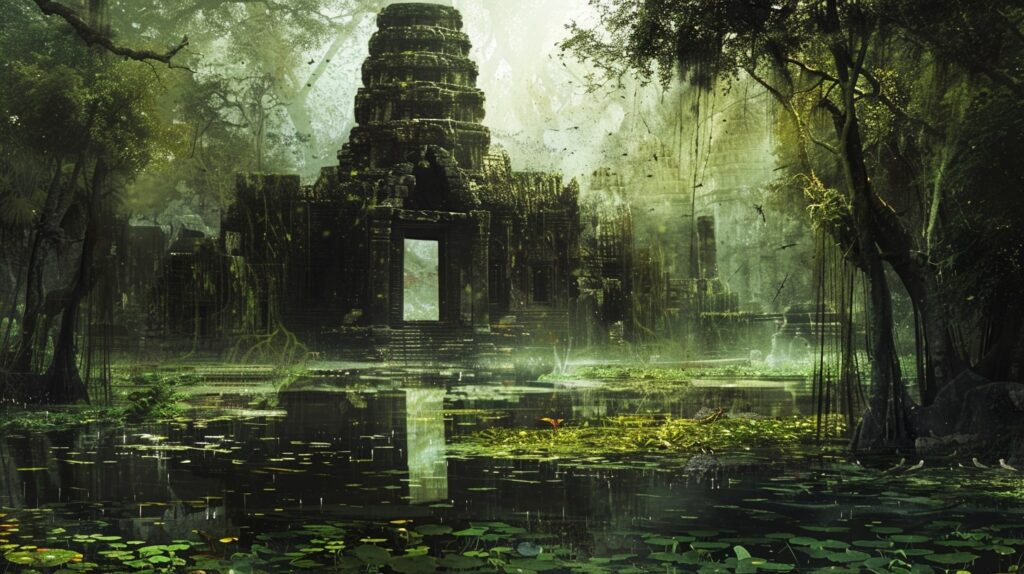
Magic and Mythology
In the realm of fantasy worldbuilding, magic and mythology play crucial roles in shaping the fabric of your fictional universe. They add depth, intrigue, and a sense of wonder to your storytelling. In this section, we will explore three key aspects of worldbuilding related to magic and mythology: crafting a magical system, incorporating mythology and legends, and defining the role of magic in society.
Crafting a Magical System
When developing a magical system, it's important to establish rules and limitations that govern how magic works in your world. Consider the source of magic, its mechanics, and any inherent costs or consequences. Will magic be hereditary or acquired through study? Are there specific gestures or incantations required to wield magic? Define the scope and boundaries of magic to ensure consistency and believability within your world.
To create a magical system that feels cohesive and immersive, take inspiration from existing worldbuilding resources and worldbuilding elements. Consider the cultural influences, geography, and history of your world when designing your magical system. The interplay between magic and other elements of your world will enrich your storytelling and make it more compelling.
Incorporating Mythology and Legends
Mythology and legends add depth and richness to your fantasy world. They provide a sense of history, folklore, and cultural identity. Incorporate mythical creatures, ancient gods, and epic tales into your worldbuilding. Consider the creation myths, heroic legends, and cautionary tales that shape the beliefs and traditions of your fictional societies.
By drawing inspiration from real-world worldbuilding cultures, worldbuilding religion, and worldbuilding mythology, you can create a mythology that feels authentic and resonates with readers. Explore the relationships between gods and mortals, the significance of rituals and rites, and the impact of legends on the daily lives of your characters.
Defining the Role of Magic in Society
Magic often plays a central role in shaping societies within fantasy worlds. Consider how magic influences power dynamics, social hierarchies, and everyday life. Does magic grant certain individuals privileges and authority? Are there magical academies or guilds that regulate the use of magic? How do non-magical individuals perceive and interact with magic users?
By defining the role of magic in society, you can create conflicts, tensions, and plot opportunities within your story. Explore the ethical and moral implications of magic, as well as the potential for abuse or misuse. These considerations will add depth and realism to your world, allowing readers to more fully immerse themselves in the narrative.
Remember, worldbuilding is a creative process, and there are no strict rules to follow. Allow your imagination to roam while keeping in mind the internal consistency and believability of your world. By carefully crafting your magical system, incorporating captivating mythology, and defining the role of magic in society, you can unleash the magic within your fantasy world and captivate your readers.

Characters within the World
In the realm of worldbuilding, it is crucial to align your characters with the world you have created. By doing so, you ensure that your characters are authentic and believable within the context of your fantasy universe. Consider the cultural influences on characters and the roles and professions they occupy within the world.
Aligning Characters with the World
When crafting your characters, it is important to consider how they fit into the world you have built. Their beliefs, values, and behaviors should be influenced by the culture and society in which they exist. This alignment helps to create a cohesive and immersive reading experience.
For example, if your world has a strict hierarchical system, your characters may adhere to societal expectations and norms. On the other hand, if your world embraces individual freedom and non-conformity, your characters may challenge existing conventions. Aligning your characters with the world helps to establish a sense of authenticity and depth.
Cultural Influences on Characters
Culture plays a pivotal role in shaping characters within a fantasy world. The customs, traditions, and beliefs of different cultures can influence their appearance, language, mannerisms, and even their motivations. Consider how cultural practices and rituals may impact the behavior and mindset of your characters.
For instance, if your world has a culture that values honor and loyalty, your characters may exhibit traits such as bravery and a strong sense of duty. Conversely, a culture that emphasizes cunning and deception may produce characters who are skilled in manipulation and trickery. By understanding the cultural influences on your characters, you can create well-rounded and relatable individuals.
Roles and Professions in the World
The roles and professions that exist within your fantasy world are essential for character development. Each character should have a purpose and a place within the society you have created. Whether they are warriors, scholars, artisans, or rulers, their roles should be aligned with the world's structure and dynamics.
Consider the opportunities and limitations present in your world when assigning roles and professions to your characters. This can create conflicts, aspirations, and goals that drive the narrative forward. Additionally, by diversifying the roles and professions of your characters, you add depth and richness to your fantasy world.
By aligning your characters with the world, taking into account cultural influences, and assigning appropriate roles and professions, you can create a cohesive and immersive reading experience. This attention to detail helps your readers connect with the characters and the world you have meticulously crafted. For more tips on worldbuilding and character creation, check out our article on worldbuilding characters.
Weaving the Threads Together
As a fantasy author, weaving the threads of your worldbuilding together is essential to create a compelling and immersive fictional world. In this section, we will explore three important aspects of this process: consistency and continuity, foreshadowing and unveiling, and balancing detail and imagination.
Consistency and Continuity
Maintaining consistency and continuity throughout your worldbuilding is crucial for creating a believable and cohesive fictional world. Consistency ensures that the rules, laws, and characteristics you establish within your world remain constant and don't contradict one another. This consistency helps readers suspend their disbelief and become fully immersed in your story.
To achieve consistency, it's important to keep track of key details and worldbuilding elements. You can create a worldbuilding checklist or use tools like worldbuilding maps to keep your information organized. Consistent worldbuilding also involves considering the cause-and-effect relationships between different aspects of your world. For example, if you establish a certain climate in a region, ensure that it aligns with the geography and vice versa.
Continuity, on the other hand, refers to the smooth flow and progression of your worldbuilding elements. It involves considering the worldbuilding timeline and the historical events that shape your world. By creating a logical and interconnected timeline, you can ensure that the events, cultures, and societies in your story evolve in a realistic and coherent manner.
Foreshadowing and Unveiling
Foreshadowing and unveiling are powerful techniques that can engage readers and keep them eager to discover more about your world. Foreshadowing involves dropping subtle hints or clues throughout your narrative that allude to future events or revelations. This can create a sense of anticipation and intrigue.
Unveiling, on the other hand, involves gradually revealing information about your world in a strategic and deliberate manner. By pacing the release of information, you can maintain reader interest and prevent overwhelming them with too much information at once. Unveiling can be achieved through dialogue, character interactions, or even through the discovery of ancient texts or artifacts within your world.
To effectively foreshadow and unveil your world, consider the pace of your story and the timing of the revelations. It's important to strike a balance between satisfying readers' curiosity and keeping them engaged in the ongoing narrative. Remember to utilize techniques like worldbuilding history and worldbuilding mythology to add depth and richness to your foreshadowing and unveiling.
Balancing Detail and Imagination
Finding the right balance between providing detail and imagination in your worldbuilding is key to captivating your readers. While it's important to provide enough detail to make your world feel vivid and real, too much detail can overwhelm readers and hinder the flow of your story. On the other hand, too little detail can leave readers feeling disconnected and confused.
To strike the right balance, focus on providing details that are relevant to the narrative and character development. Consider the worldbuilding cultures and worldbuilding characters you have created, and share details that contribute to their growth and interactions. Use descriptive language to paint a vivid picture of your world, but also leave room for readers' imagination to fill in the gaps.
Remember that not every aspect of your world needs to be explicitly described. Allowing readers to use their imagination can make your world more engaging and participatory. By providing enough detail to ground readers in your world and sparking their imagination, you can create a world that feels both familiar and wondrous.
Incorporating these techniques of consistency and continuity, foreshadowing and unveiling, and balancing detail and imagination will help you master the art of worldbuilding and create a captivating and immersive world for your fantasy story. Happy writing!






